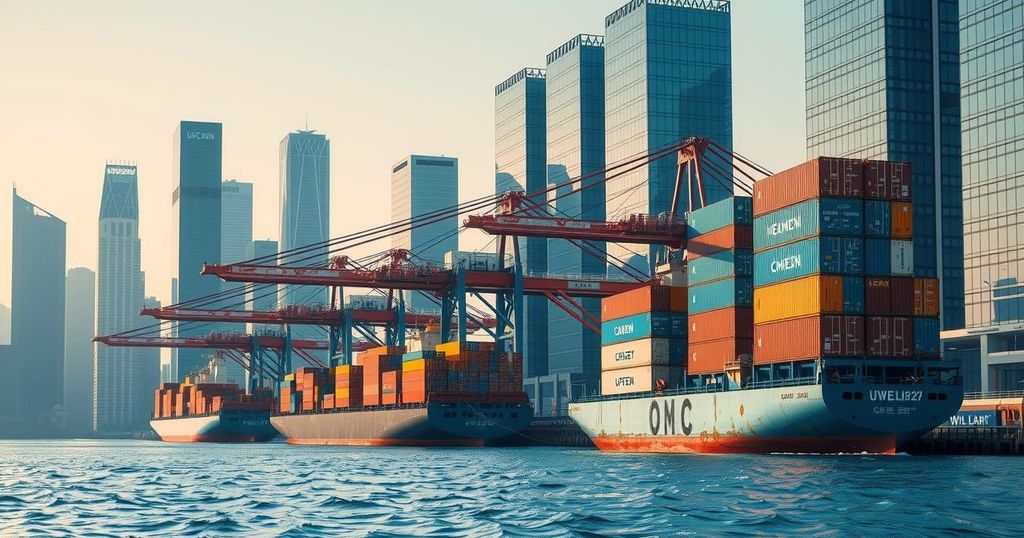China has retaliated against U.S. tariffs by imposing a 15% duty on selected American exports, including coal and vehicles. This escalation reflects ongoing tensions and economic strategies in a trade war that has historical precedents. Concerns about inflation and economic growth persist, as markets react to the possible consequences of these tariffs.
The trade tensions between the United States and China have escalated as China responded to recent U.S. tariffs with its own 15% duties on select American exports. This retaliatory measure includes tariffs on coal, liquefied natural gas, and vehicles, while also initiating an investigation into Google for alleged monopolistic practices affecting American firms in China. The targeted nature of these tariffs contrasts with the broader range proposed by Mexico and Canada, raising questions about their strategic purpose.
President Trump has consistently attributed the influx of illegal fentanyl to China and criticized its electronics firms for engaging in predatory pricing. While tariffs against the European Union remain a possibility, Trump pointed out the disparity in trade, asserting that the EU does not reciprocate with equivalent imports from the United States. The EU has already warned of retaliatory actions should tariffs be imposed.
The current situation mirrors earlier trade conflicts initiated by the Trump administration in 2018, particularly regarding tariffs on washing machines and solar panels, which led to a temporary trade agreement. The ongoing trade disputes have been complicated by the COVID-19 pandemic, which has weakened China’s economy. With the Biden administration maintaining the existing tariffs, the pathway ahead suggests prolonged negotiations and potential conflicts.
Concerns are rising regarding the impact of persistent tariffs on economic stability, particularly as they are generally inflationary and could hinder growth. Market reactions have been volatile, with significant declines in the Dow Jones Industrial Average signaling investor apprehension over the potential for higher consumer prices resulting from these tariffs. Economists warn that increased costs for businesses may ultimately be transferred to consumers, potentially leading to widespread price hikes.
Eric Winograd, a noted economist, emphasized that tariffs resemble taxes that ultimately reduce consumer spending power. He indicated that past trade wars demonstrated a predictable pattern of increased consumer prices resulting from elevated tariffs. Additionally, adjustments to supply chains might impose additional costs that could further escalate pricing for American goods abroad, creating a cascading effect on the economy.
The renewed trade conflict between the United States and China is underscored by the U.S. administration’s imposition of tariffs on various imports, which China has countered with its own tariffs. The tariffs reflect ongoing accusations against China concerning its trade practices, particularly related to issues such as dumping, and concerns over the trafficking of illegal substances like fentanyl into the U.S. This trade war is part of a broader pattern of tensions between major global economies, with significant implications for international trade dynamics and economic stability.
The trade tensions between the United States and China are intensifying, with both nations imposing tariffs that could disrupt global supply chains and lead to inflationary pressures. The complexity of these tariffs raises concerns about their long-term impact on consumers and the economy. As President Trump navigates his trade policies, the potential for retaliatory actions from other nations adds another layer to an already intricate situation. Therefore, careful observation of the evolving circumstances is warranted to evaluate the broader economic implications and potential resolutions.
Original Source: www.usnews.com




